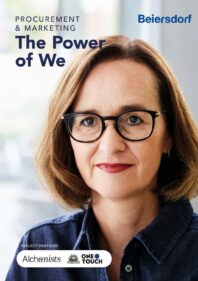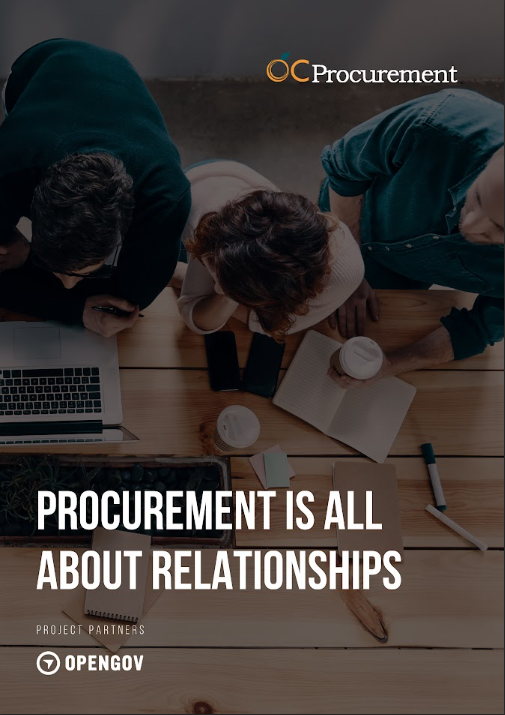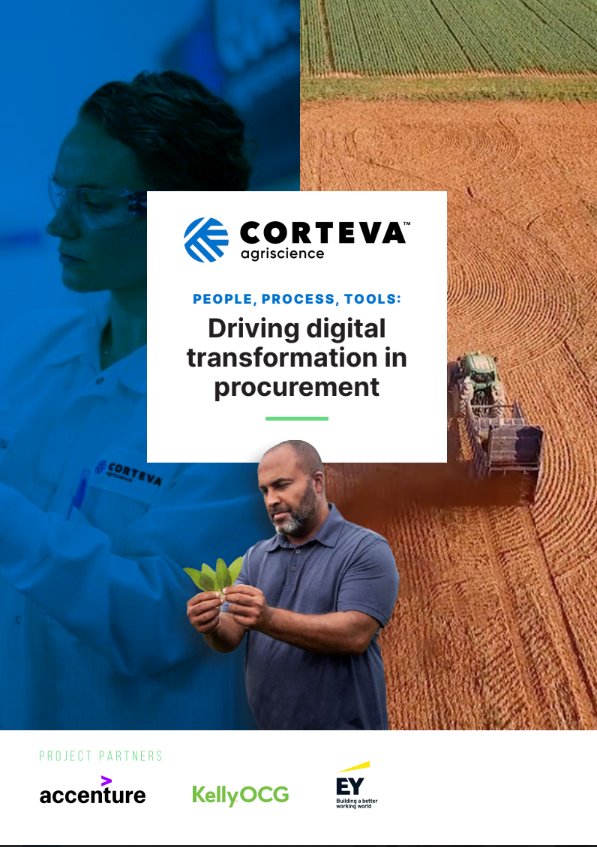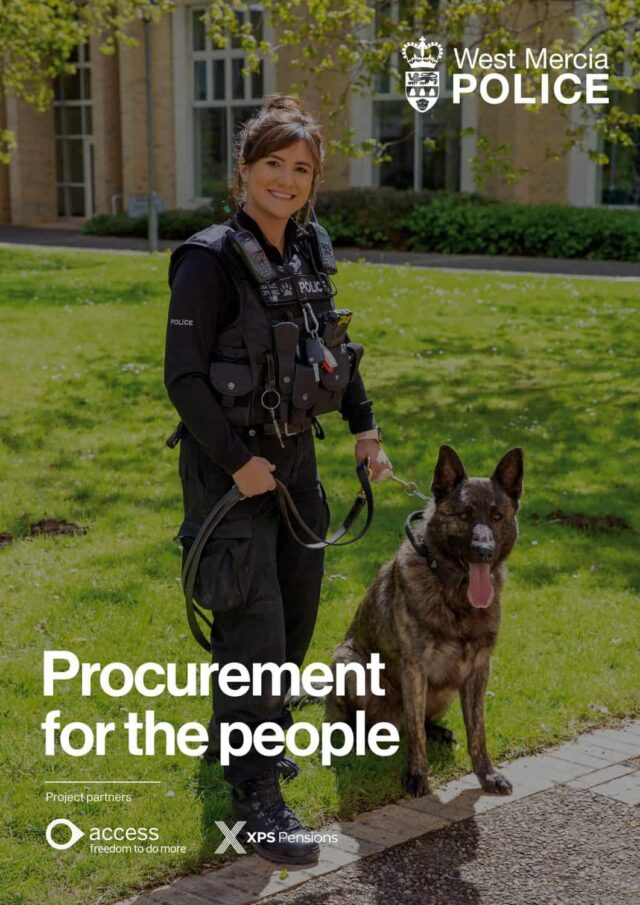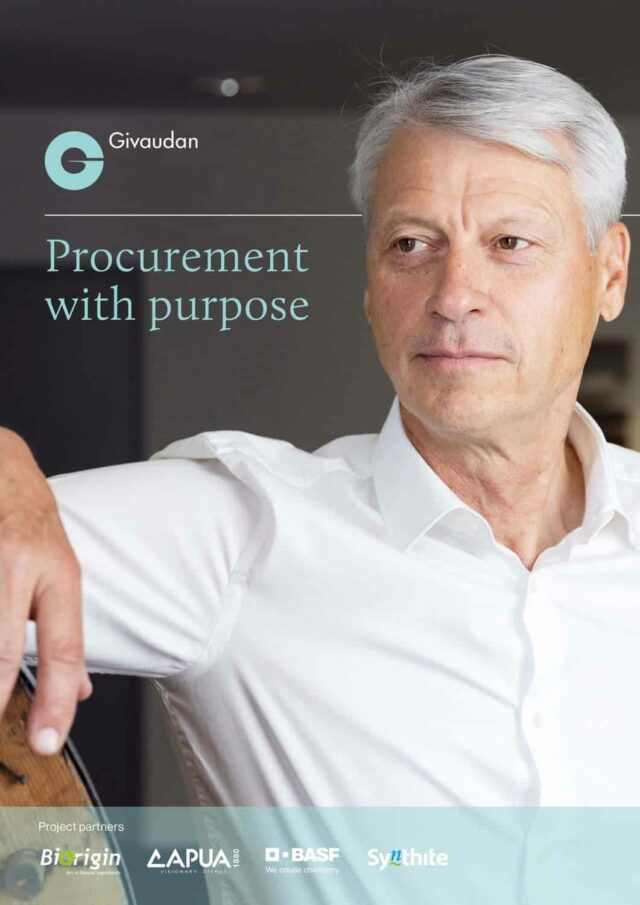When we talk about procurement transformation, we often speak of a journey towards a recognition of the true value the function can bring to an organisation. Procurement sits in a key position, touching all parts of the business, but for many years it wasn’t engaged by those other business areas until very late into key strategies and processes. The biggest shift of many procurement functions has centred around greater internal collaboration and this is most certainly the case for Beiersdorf, one of the top skincare companies in the world and owners of three leading skincare brands: NIVEA, Eucerin and La Prairie.
In 2017, Beiersdorf sought to embark on a procurement transformation and brought in Isabel Hochgesand as Chief Procurement Officer. With more than 25 years of experience in the procurement space, Hochgesand is a firm believer in procurement occupying a key part of the bigger picture rather than simply acting as a siloed, distant figure. “We are part of an ecosystem,” she notes. “The ecosystem doesn’t have us in the middle, it has the consumer in the middle. What this means, and what formed the drive of our transformation is: you do not have linear internal relationships anymore. You are a critical contributor in a multifunctional team, bringing in external market know how and trends, connecting the outside meaningfully with the inside. You can only create this ‘meaningful interaction’ when you understand what your internal business partner is striving for to anticipate consumer needs.

“On the one hand, you need to bundle spend and leverage your scale – so from local to regional, from regional to global opportunities. At the same time, you need to develop depth of expertise in the spend category to work closely with your internal and external business partners to transform the space. This is not about coming in at the last bit of the decision-making process and negotiating the deal. This is about using your expertise to challenge and support your internal business partners when developing the strategy and defining the scope of work. This is where the ‘value’ sits, and this is where spend can be avoided from the start. For all of this, for sure, you need strong relationships and stakeholder management skills coupled with excellent strategic capabilities.”
This is where the Beiersdorf procurement journey becomes unique. The procurement transformation at Beiersdorf is part of the story, not the story. What we will see later – and what Hochgesand is keen to stress – is that the transformation of the procurement function was the enabler for a new type of business partnering, allowing the team to be heavily involved in the overall business strategy from the very start.
The procurement transformation journey
The starting point for the procurement transformation was a new mindset and focus. Hochgesand explains: “We want to be as global as we can be and as local as we need to be, we want to be integrated into the business to the maximum and work on eye level with the respective functions. We focus on expertise building, strategy development and stakeholder management. This goes hand in hand with driving efficiencies and digitalising the procurement processes. By making use of automation and eliminating many operational tasks, we drove productivity.”
Procurement was one of the early adopters of new digital technologies. Beiersdorf now has one standardised IT platform, which procurement capitalises on to drive harmonised processes globally and create full transparency in procurement on global spend. “It is rewarding to see how our digitalisation efforts have been adopted so quickly around the globe,” she explains. “The availability of globally harmonised data enables us to support and consult the business, anticipate trends and derive strategies. More than 80% of our POs flow through the system without being touched once by procurement employees. Issue resolution is being addressed by RPAs (Robotic Process Automation) – again, touchless. This drives out non-value adding work and allows us to focus on more strategic priorities with our people.”
Beiersdorf has been able to free up resources thus enabling the procurement team to put more focus on value adding activities, such as exploring new markets, or working closely together with business partners on strategic topics. “Overall we cover 90% of all external spend within procurement and now can also invest in new and emerging trends and categories like sustainability, digital media, marketing technology and start-up collaborations,” Hochgesand says. “By the way, this also makes the jobs in procurement more enriching.”
Strong collaboration on eye-level
Now let’s get to the story behind the story: Hochgesand believes that one key enabler to their success is early partnering with the business to develop and drive the right strategy. “I don’t see many procurement functions working like we do with the marketing teams. I connect a lot to other CPOs and often hear from them saying that it’s really tough to get accepted by marketing and be invited to the table at the right point in time. We can claim that we are one step ahead. Our business partners in marketing, be it design, market research, or creative agency leaders, invite us to the meetings at a very early stage and involve us in the strategy creation and partner with us in the pitches. The selection of the right external partner then follows a very differentiated criteria list – again, aligned and discussed among all functions.”
Now let’s talk more about the transformation by focusing on the example of early collaboration in the marketing space. Nelli Louloudi is Director Global Procurement Marketing & Media. Together with her team, she is involved in all strategic marketing decisions worldwide and is responsible for close to 70% of Beiersdorf’s global marketing spend.
“The role of procurement marketing has significantly evolved in our company,” she explains. “Today, we are acting as business transformers. I am very proud of having a team in place with a large area of marketing expertise. Ranging from media planning and programmatic digital media buying to creative and consultancy expertise. All those areas are highly inter-linked with each other. This makes it possible for us to actively drive an end-to-end marketing vision and decision,” Louloudi says.

“Building on a strong business partnership and collaboration on eye-level, we started our creative transformation program years back when we developed together with marketing our holistic creative transformation strategy. At the first step we reviewed the entire communication value chain and decided to redesign the agency model entirely. We developed a new, unique, bespoke agency model for Beiersdorf, which we call ‘The Power of One’, integrating creativity, technology, and data.
“Only after defining the new agency model have we started the agency selection process with an innovative, tailor-made approach focusing on working sessions and observing which partner is really fitting our needs and culture. During this process procurement performed many tasks in one role: project manager, strategist, innovation driver and risk manager,” Louloudi explains.
Procurement at Beiersdorf is placed firmly at eye-level with its business partners and collaborators. “Procurement is included within all of the company KPIs,” Hochgesand says. “It’s not only savings that we work on. It’s also our contribution to best-in-class customer service, innovation capability, compliance and sustainability.”
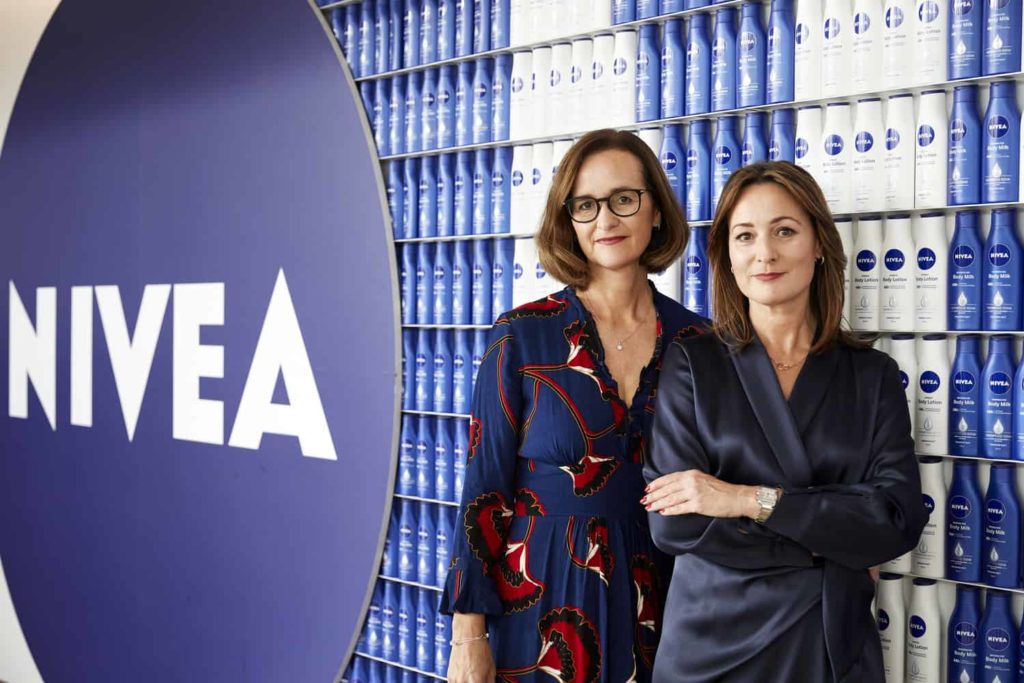
Three-dimensional change
Running alongside the procurement transformation, Beiersdorf also initiated a marketing transformation for its biggest brand NIVEA.
“In addition, we recognise a high velocity of change that is impacting our consumers, our agencies, and us. These changes have accelerated significantly over the past five years and have increased exponentially again with the Covid-19 crisis,” Louloudi says.
“All those three transformations – first the functional procurement, second the internal marketing and third the external market changes – led inevitably to and built the foundation of our new Global Procurement Marketing Strategy,” she reveals. “This is why we launched what we call our, ‘3D Transformation Strategy’, which led to an exciting momentum and to a number of marketing transformation programs including creative communication, design and market research with strong involvement of procurement marketing.”
New creative agency model
Beiersdorf worked with the same creative agency for over 100 years and wanted to change a lot in terms of regional, local and global responsibilities, to leverage more synergies, and to work with the best creative heads and minds in the digital sphere.
Redesigning the creative agency model required constant dialogue with the entire global marketing organisation. “There were many questions for which we had to find just the right answer,” Louloudi says. “For example, how does the agency model work operationally? How do we create relevant global campaigns that work locally? How do we incentivise the agency in our global and local collaboration?
“We went through several working sessions and dedicated an over-proportional amount of time to thoroughly understand and analyse the different agency operating models and capabilities that exist. In the end, we decided to design our own bespoke agency model. Defining this new agency model integrating creativity, technology and data was a huge undertaking and was only possible by working closely as one team.”
In this journey, marketing and procurement took joint responsibility to protect the business and care for the values of its brands and identity, as well as improve the business KPIs. Louloudi comments: “With NIVEA we own one of the strongest, most trusted and iconic brands, globally. Therefore, the objective of the pitch was not to transform our brand, but rather to transform our communication model while adapting to modern times.”
From the marketing side, Dagmar Janke, Head of Global NIVEA Communication at Beiersdorf and Tobias Christoph Collée, Vice President NIVEA Masterbrand & Communication worked together with Nelli Louloudi and Isabel Hochgesand to tackle the sheer complexity involved in creating a brand-new bespoke agency for the brand. “We had the great pleasure to lead the first agency pitch after 100 years,” Janke enthuses. “And we worked very closely with procurement during all that time to find the perfect model and then the perfect agency.”
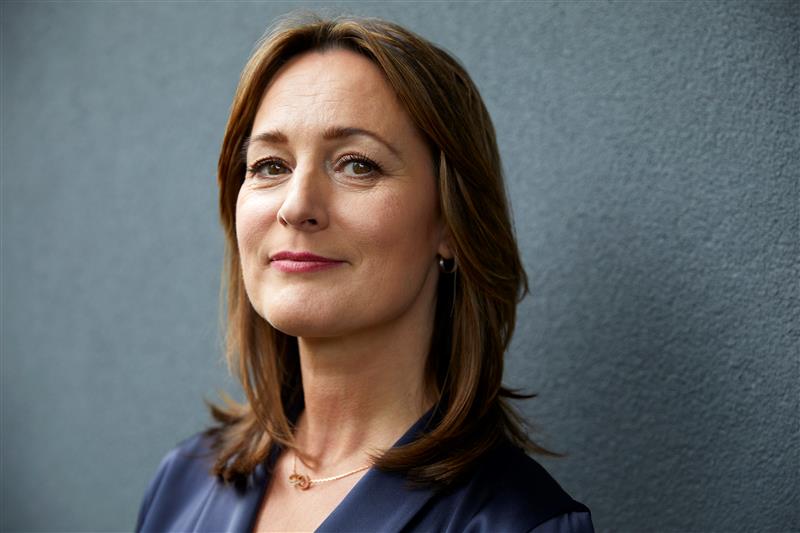
Beiersdorf partnered with Alchemists, a marketing advisory partner focused on getting the best from clients and agency partnerships through creativity and data. Alchemists was instrumental in identifying the agency model and how to implement it, and the key to achieving this bears a striking similarity to the way in which Beiersdorf works. “We started by unders-tanding Beiersdorf, their journey and where they were. We were understanding the past so that we could design the future,” says Vladimir Komanicky, Founding Partner at Alchemists. “It was decided that the best approach was redesigning the agency model entirely. Again, the critical first element was talking to the entire global organisation to understand where they were and to think about where they wanted to go.”
But it went beyond simple box-ticking for Alchemists. As Komanicky continues: “We were also looking to win their hearts. Transformations like these are incredibly difficult and complex. People need to feel like they are part of this journey because they absolutely are. This whole process incorporated procurement and marketing. We had a model, we identified a partner who had the best solution for that model, and then we made it a reality. Now it’s about driving the performance, building the relationship, and actually making that relationship between Beiersdorf and the agency partner the best it can be.
A new breed of agency
Finally, in January 2020, Beiersdorf announced: ‘A new transformation calls for a new kind of agency’. Publicis Groupe and Beiersdorf created Publicis One Touch, a new breed of bespoke agency model for NIVEA, that combines under one roof a thought leadership from a diverse range of Publicis Groupe capabilities, from Sapient technology to creativity, data and social media.
“A part of our strategy was to go with a customised agency model,” Louloudi explains. “This means there is a dedicated team for us which understands the brand, ensures consistency across 150 countries and – at the same time – brings in the knowledge and expertise from a lot of people around the world,” says Collée. Janke concurs: “With the new bespoke model, the silos are gone. They are replaced by consistency and expertise, two key aspects when you work in a complex ecosystem.”
Similarly, Andrea Pedrazzini, CEO of Publicis One Touch comments: “We live today in a world that is dominated by horizontal digital platforms, such as Amazon, Google, Apple or Netflix. In this context, to maintain the relevance of a brand like NIVEA with existing and new consumers, we must flip the old approach to communication building our initiatives by understanding the real Identity of consumers, dynamic, expose them to diverse, disruptive creativity in an ecosystem of scaled smart media and build direct relationships. This is how we can unlock growth in a platform world and to achieve that we needed a new breed of agency, designed with creativity at the heart and combined with an ecosystem of integrated, multi-disciplinary talent, aiming at finding original solutions to today’s NIVEA challenges and execute them through Publicis Groupe ‘Power of One’.”
The relationship with Publicis Groupe, established earlier in 2020, is a key example of how this new model allows NIVEA to tackle the delicate task of defining a new communications future by tackling the complexity together. “If we look back, we used to work in silos with many local agency partners all over the world for NIVEA,” Janke explains. “And so, we had a lack of consistency. But with the new bespoke agency model, we work along the consumer journey together and not in silos anymore. We have the best teams working to reach the consumer, no matter what kind of touch point it is and this helps brand consistency a lot. In addition, we have more transparency, through a headquarter hub, and nine other hubs all over the world.”
Publicis One Touch sees Beiersdorf and Publicis Groupe partnering at eye level. Pedrazzini builds: “Together with Beiersdorf we have abandoned old transactional models. Today, decisions and strategies are discussed and taken together, integrating Publicis Groupe and Beiersdorf talent, also physically in the One Touch offices, in one team steering the new agency model.”
A major global campaign forged by Publicis One Touch centred around some of the issues its clients faced as a result of the COVID-19 pandemic.
Two consecutive first-of-their-kind global reports on the state of human touch from before and during the COVID-19 pandemic were published by NIVEA, revealing a ‘concerning level of physical touch deprivation and loneliness, made worse by the ongoing pandemic’. In response to these findings, the NIVEA skincare brand, launched its brand Purpose, ‘Care for human touch to inspire togetherness’. NIVEA committed to pointing out the proven health benefits of physical touch and promoting skin-touch, as soon as circumstances permit. The brand pledged to invest 20 million Euros in local skin-touch projects around the world, reaching 150,000 people, among them babies born preterm, the visually impaired and elderly with dementia.
“We have to move forward,” Collée explains. “Sustainability, diversity, digitalisation, engagement are huge topics and everybody is trying to find good solutions to them. We’re not just selling a product, but also helping consumers; we are there for them as a partner. I think brands will go more and more in this direction in the future. And I think we all need to partner more as we live on this earth.”
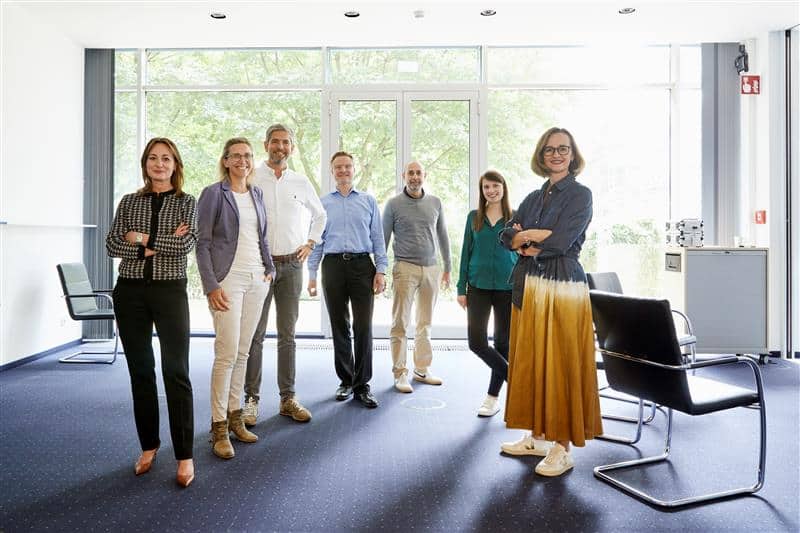
The future
Finally, Louloudi highlights that this successful collaboration led to more and more internal business partners requesting to work with the Global Procurement Marketing Team on business transformation programs. “We share a common vision and passion for the business,” she adds. “In our integrated partnership it is hard to define where our role splits because we act as one team.” This harks back to the ‘Power of We’.
This isn’t a marketing transformation. This isn’t a procurement transformation. This is a Beiersdorf transformation. It’s a story of empowerment. These vastly improved business partnerships are defined by the people that make them possible and Hochgesand is a firm believer in empowering those people and creating and fostering a culture of diverse minds to challenge one another. “I believe that diverse teams can drive better business results,” she says. “Given the complexity of our organisation, the discussions we have are often challenging and require different approaches. We have so many different perspectives and personalities and experiences.”
When we talk about procurement transformation, storytelling is a key area of focus. As Hochgesand has already noted, communication and the concept of finding different currencies when discussing the value of procurement, all boils down to storytelling. Procurement knows procurement. Marketing is a little different in the sense that it is entirely focused around storytelling, but marketing knows marketing. This marriage between the two areas makes sense, but as Hochgesand mentioned previously, different perspectives are important. “I’ve had colleagues beaming at how amazing it has been to have such visibility as procurement, and how it is being more respected and trusted,” she says. “Having created this visibility, having delivered the results, and by having this network together with marketing, people understand what we do a lot more than ever before and so we are being invited more often to contribute. That’s what I see as a sign of success.”
But success does not mean the end of a journey. “Our consumer doesn’t allow us to rest,” adds Hochgesand. “The consumer is the true boss and the consumer continues to change and so we need to think about how agile our future organisation needs to be. The blurring of the organisational lines that I mentioned will only accelerate.”
